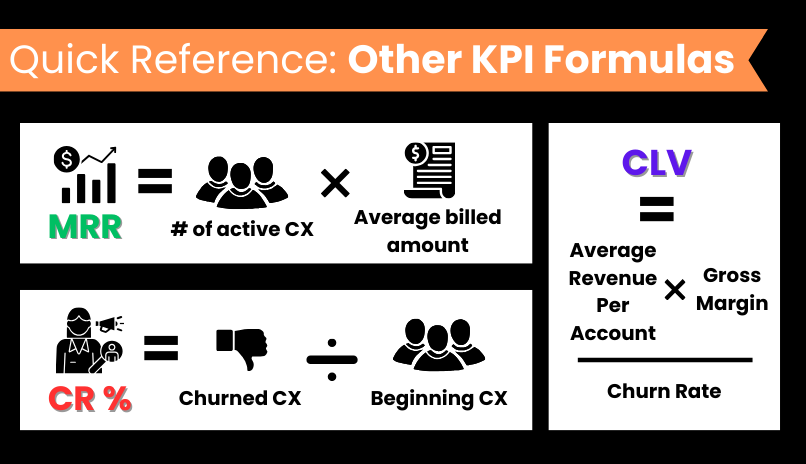Launching a SaaS product is an exhilarating journey. It’s an occasion marked by anticipation, excitement, and a sigh of relief. There are high fives all around. Slaps on the back. Maybe even a cigar and some single-malt, if that’s your thing.
However, the launch is merely the beginning. It takes the average startup 2-3 years to generate a profit. The real challenge lies in scaling your product post-launch. This is what ensures ongoing success and growth.
Celebrating small victories is important. But you should also start gearing up for the next phase of company development. If you don’t yet have a SaaS post-product launch marketing strategy, now is the time. And you’ve found yourself in the right place.
We’re about to delve into the important aspects of post-launch strategies for your SaaS product. We’ll be highlighting critical points in the grand scheme of your product’s life cycle.
We will explore how to tweak your marketing plan based on various factors. We’ll also discuss how to iterate your strategies to guarantee long-term growth and profitability. Let’s get this party started.
Table of Contents
Understanding the Dynamics of a SaaS Product Launch Marketing Plan
Unicorn startup – A private startup with a valuation of over $1 billion. In the US, 20% of unicorns are SaaS businesses.
Your business could be next on the list. But you need to understand that a SaaS product launch marketing plan is an ongoing process.
The initial launch may have been successful in generating buzz and attracting early adopters. If that’s the case – congrats! However, sustaining and scaling your product requires continuous effort.
In the world of SaaS, there really is no such thing as a finished product. The sky is not the limit. There is no sky.
/matrix
Let’s talk about where post-launch strategies come into play.
Measuring Success in SaaS Post-Product Launch Marketing Growth

You need a system in place for measuring the success of your SaaS post-product launch marketing strategy. It will help you track progress and make informed decisions about future tactics.
Here are some metrics to consider when evaluating the success of your post-launch marketing plan:
- Customer Retention Rate: Retaining existing customers is critical for long-term profitability. Track your customer retention rate to gauge the success of your efforts.
- Monthly Recurring Revenue (MRR): MRR is a big deal for SaaS businesses. It reflects the predictable revenue customers generate each month. Watch this over time to determine the effectiveness of your USP and marketing plan.
- Customer Lifetime Value (CLV): Tracking CLV can help you evaluate the success of your cross-selling and upselling efforts.
- Churn Rate: A high churn rate is a huge red flag. It may indicate that your product or marketing strategies need an overhaul.
Tracking these metrics and others relevant to your business has an exorbitant value. They help guide future decision-making. Using data from these metrics will ensure that your SaaS product continues to scale successfully in the long term.

Adapting Your Marketing Plan
Change is inevitable. There’s even a term for it in business. It’s called change management. Enterprise-level companies know what works today may not necessarily work in the long run.
You need to be agile and adapt your marketing plan based on user feedback and market trends.
Here are some key factors to consider while adapting your marketing plan post-launch:
User Feedback
Gathering user feedback helps you understand how customers perceive your brand. At the end of the day, your opinion is kind of irrelevant.
You’ll receive insights into what features are getting the most use. These insights will show you if the company needs to address any paint points. And they’ll give you a feel for overall satisfaction levels.
Usage Patterns
Analyzing usage patterns can help identify opportunities for upselling or cross-selling additional features.
It can also highlight any areas that may need improvement regarding user experience.
Competition
Keeping an eye on your competitors is part of the post-launch process.
It can help you identify any gaps in the market that you can fill. You can also try to stay ahead of any new product releases or updates from your competitors.
But be careful. Don’t tunnel-vision out on what competitors are doing. It’s a double-edged sword and can easily come back to bite you.
Market Trends
The market for SaaS products is ever-evolving. Keeping up with what’s hot in the streets can give you an idea of how to make your existing products better.
This information will allow you to refine your marketing strategy. On top of that, it can help identify potential growth opportunities.
Iterating Your SaaS Post-Product Launch Marketing Strategies

You have a ton of feedback from users? Fantastic!
What about data on usage patterns? Great.
Now, it’s time to iterate your marketing strategies.
Iteration involves refining your messaging, targeting specific customer segments, and experimenting with different channels. Here are some key tactics to consider in your SaaS post-product launch marketing strategy:
- Segmentation: Segment your audience as your product gains traction. Tailor messaging to individual groups that have specific needs. You’ll reach a wider range of potential customers and increase conversions.
- Personalization: Personalizing your tactics impact customer retention and satisfaction. Options include emails, targeted ads, or customized product recommendations.
- Content Marketing: Creating valuable and engaging content drives traffic to your website. It improves your search engine rankings and establishes thought leadership in your industry. Try a variety of blog posts, case studies, webinars, or podcasts to see what works best.
- Experimentation: Try new things. Experiment with different marketing channels and tactics. You’ll want to master A/B testing. Maybe even try your hand at influencer marketing or partnerships with complementary products.
Harnessing User Feedback for Growth
We touched on this above. But it deserves its own section.
User feedback is a goldmine of information for SaaS product owners. It improves the overall user experience. We’re confident you’re aware of that.
But you can also use it to drive growth and profitability. Here are some ways to harness user feedback for post-launch success:
- Feature Prioritization: It can identify which features are most in demand. Prioritize these specific features for development. You’ll improve overall product offerings and attract new customers.
- Customer Retention: Addressing user pain points and increasing satisfaction levels leads to higher customer retention. A constantly increasing number of customers translates into long-term growth and profitability.
- Referral Marketing: Happy customers recommend products to their network. Word-of-mouth marketing through referral programs attracts new customers. The best part is it involves minimal effort on your end. Get on this one sooner rather than later.
- Product Advocates: You can create a group of product advocates to act as brand ambassadors. Organic promotion can be a powerful tool for post-launch success.
SaaS Product Marketing – Adapting to Market Changes
We know you’re aware that today’s market is fast-paced. Staying ahead of the curve is crucial for long-term success. Continuously evaluate and adapt your SaaS product marketing to keep up with changes.
Here are some ways to ensure that your SaaS product remains relevant and competitive:
- Continuous Market Research: Conducting regular market research helps you stay informed about developments in your industry. Use this intel to refine your marketing strategies.
- Customer Surveys: Conduct periodic surveys for a deeper gaze into customer preferences. Use the results to make informed decisions about your roadmap.
- Flexibility: Adapting quickly to market changes will turn you into a shark in already shark-infested waters. Try to be ready for anything. Expect the unexpected. And have protocols in place for a variety of scenarios.
Optimizing Your Marketing Plan for Long-Term Profitability
Optimize your marketing plan for long-term profitability. Regularly review and refine your tactics based on performance data and industry trends. Focus on the following areas:
- Conversion Rate: Tracking your conversion rate identifies potential issues with your website or messaging. They could be hindering conversions. Optimizing through A/B testing leads to increased customer acquisition and revenue.
- Customer Lifetime Value: Make customer lifetime value a priority. Do this by offering upsells, cross-sells, or subscription upgrades to existing customers.
- Pricing Strategy: Regularly evaluating your pricing model shows your product’s value is accurately reflected. It also indicates that you’re maximizing revenue. You may need to adjust prices, offer different pricing tiers, or implement promotional offers.
- Customer Acquisition Cost: Watch customer acquisition cost like a hawk. Aim to reduce it over time. Refine your targeting strategies, optimize ad spend, or focus on organic and referral marketing.
Regularly reviewing and optimizing these key areas ensures your marketing plan drives long-term profitability.
Don’t be afraid to experiment, gather feedback, and adapt your strategies as needed. It’ll help you keep up with your competition and an already fickle SaaS customer base.
Navigating Challenges in Post-Launch Scaling
Despite your best efforts, there may still be challenges that arise during the post-launch phase.
This is a natural part of the growth process and should not discourage you. Here are some common challenges you may face and how to navigate them:
- User Retention: If you notice high churn rates, reassess your product offering. Address any pain points that may be causing users to leave.
- Competitive Pressure: The SaaS market is becoming increasingly competitive. Stay on top of your game. While you should be aware of what competitors are doing, don’t let them scare you. Focus on what you do and how you can make it better.
- Scaling Infrastructure: You may encounter challenges scaling your infrastructure as your customer base grows. Plan for this and prepare to invest in resources as needed.
- User Feedback Piling Up: Feedback can also be overwhelming at times. Have a system in place for organizing and prioritizing feedback so that you can act on it effectively.
By anticipating and proactively addressing these challenges, you can navigate the post-launch phase with confidence and continue to scale your SaaS product successfully.
Scalability is a continuous process that requires constant evaluation and adaptation.
Stay agile and embrace change. It will help position your product for long-term success in the competitive SaaS market.
A Proper SaaS Post-Product Launch Marketing Strategy is an Ongoing Journey to Scaling Success
A successful SaaS post-product launch marketing strategy requires ongoing optimization, adaptation, and vigilance.
Challenges will arise. It’s part of business. And it’s a part of SaaS product marketing. Focus on areas like customer retention, lifetime value, and managing acquisition costs.
Stay agile, anticipate changes, and proactively address any issues. User feedback is invaluable, helping to refine your product and SaaS product launch marketing plan for the better.
Track metrics such as the churn rate, MRR, and CLV. Numbers don’t lie. Data will guide you into strategy effectiveness and illuminate the path to future decisions.
The journey to scaling success in SaaS is a marathon, not a sprint. It’s an ongoing process that involves continuous learning, adapting, and growing. Embrace the post-launch phase, for it is here where your product truly begins to thrive.





Your article helped me a lot, is there any more related content? Thanks!
We are happy to hear this article was helpful for you. You may also want to check out our articles on SaaS product launch marketing plan and B2B vs B2C SaaS.
Super helpful steps that I will definitely incorporate in my next launch, thank you!
Good luck for your next launch!